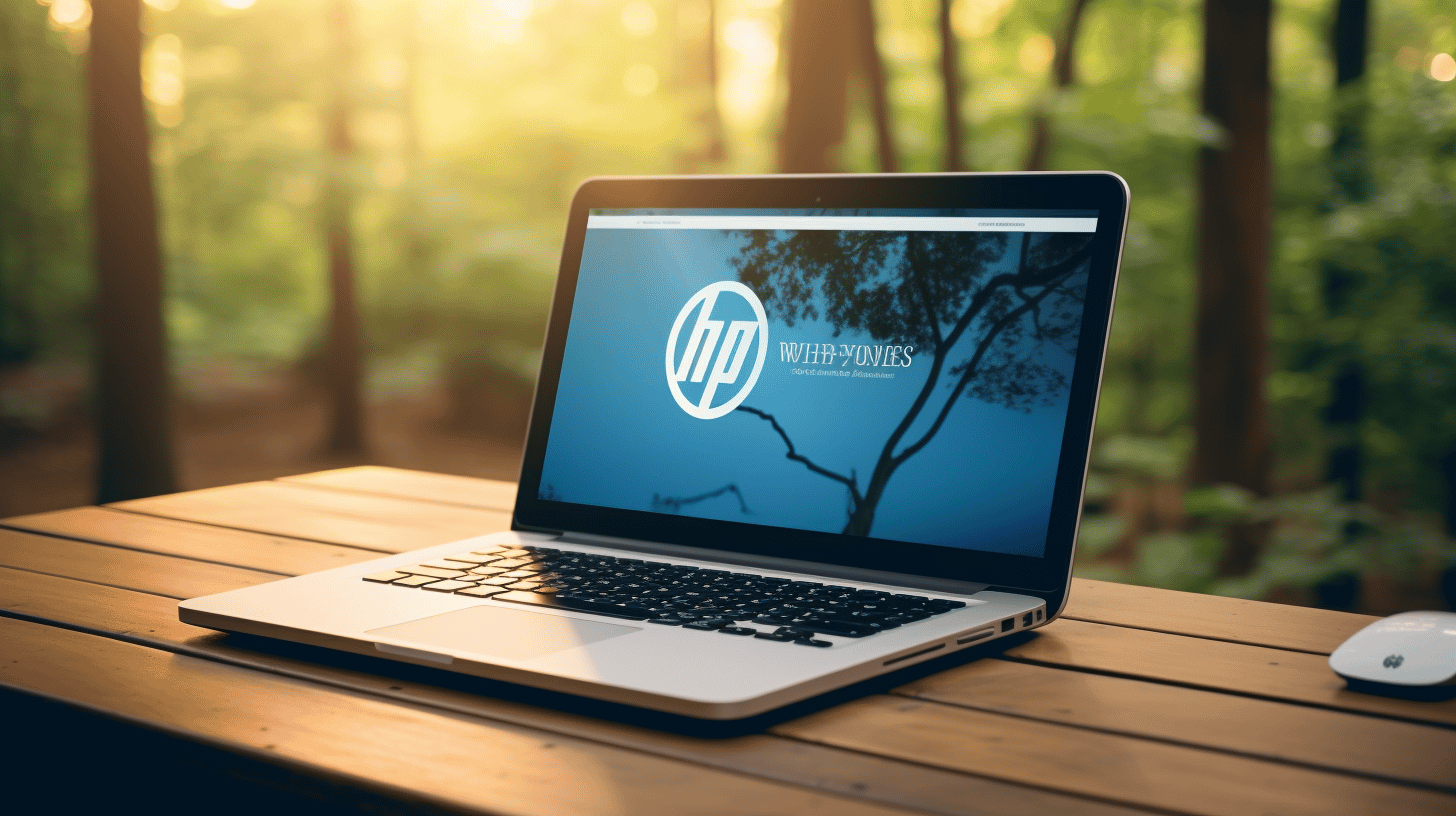在當今數位時代,擁有強大的網路影響力對於企業和個人來說都至關重要。在建立和維護網站方面,WordPress 無疑是最受歡迎和最可靠的平台之一。但是,有時您可能需要將 WordPress 網站遷移到新的主機或網域。無論是由於業務需求的變化、功能的改進,還是僅僅尋求更好的效能,成功的 WordPress 遷移都可以確保順利過渡而不會出現任何問題。
但遷移 WordPress 網站可能是一項艱鉅的任務,特別是如果您不熟悉流程。它需要仔細的規劃、注重細節以及正確的工具和技術來確保一切順利進行。從備份您的網站到在新主機上設定 WordPress,遷移過程涉及幾個關鍵步驟。
在本文中,我們將引導您了解 2024 年成功進行 WordPress 遷移的技巧和最佳實踐。那麼,讓我們開始吧,讓您的 WordPress 遷移變得輕鬆且成功! 👩💻💪
了解 WordPress 遷移
🚚 將您的 WordPress 網站移至新主機或伺服器可能是一項令人興奮但又令人緊張的任務。無論您是經驗豐富的 WordPress 使用者還是初學者,了解 WordPress 遷移的概念和流程對於確保順利過渡至關重要。在本文中,我們將揭開 WordPress 遷移的神秘面紗,解釋為什麼您可能需要遷移您的 WordPress 網站,並探討一些常見的遷移原因。
什麼是 WordPress 遷移?
WordPress 遷移是指將 WordPress 網站從一個伺服器或託管提供者移至另一個伺服器或託管提供者的過程。它涉及將所有文件、資料庫、外掛程式、主題和設定從現有網站傳輸到新位置。簡單來說,這就像打包您的整個網站,包括其設計和內容,並將其移至新家。
為什麼需要遷移您的 WordPress 網站?
您可能會因為多種原因而發現需要遷移您的 WordPress 網站。以下是一些常見的情況:
- 更換網站寄存服務供應商:您可能決定轉換到提供更好效能、可靠性或客戶支援的新託管公司。遷移您的 WordPress 網站可確保您的網站在過渡期間保持正常運作和可存取。
- 可擴展性:隨著您的線上業務的成長,您目前的託管計劃可能不再足以處理增加的流量和資源需求。遷移到更強大的伺服器或升級您的託管計劃可以實現無縫擴展並確保最佳效能。
- 網站重新設計或改造:如果您打算讓您的網站煥然一新或實施重大的設計變更,那麼建立新的 WordPress 安裝並遷移您的內容和功能可能會更有效率。這樣可以提供一個乾淨的記錄並避免與現有元素的潛在衝突。
- 伺服器遷移或升級:在某些情況下,由於技術原因或基礎架構變化,您目前的伺服器可能需要重新定位或升級。將您的 WordPress 網站遷移到新伺服器可確保持續的正常運作時間和效能。
- 測試和分階段:對您的網站進行更改或更新時,最好先在暫存環境中進行測試,然後再將其套用到即時網站。 WordPress 遷移可讓您複製您的網站並建立測試環境,而不會影響生產網站。
WordPress 遷移的常見原因
讓我們深入了解 WordPress 用戶選擇遷移其網站的一些常見原因:
| 原因 | 描述 |
|---|---|
| 表現 | 遷移到更快、更可靠的主機可以顯著提高您的網站速度。 |
| 安全 | 遷移到具有強大安全措施的主機有助於保護您的網站免受潛在威脅。 |
| 更好的支持 | 切換到具有優質客戶支援的託管服務提供者可確保及時提供協助。 |
| 節省成本 | 從長遠來看,遷移到具有成本效益的託管計劃可以減少您的網站開支。 |
請記住,成功的 WordPress 遷移需要仔細規劃、注意細節並遵守最佳實踐。在下一部分中,我們將深入研究遷移 WordPress 網站的逐步過程,為您提供全面的指南,以確保順利過渡。
2024 年移民前檢查清單
在當今數位時代,網站遷移已成為企業和個人的重要任務。無論您是升級託管、更換供應商,還是僅僅希望提高網站的效能,成功的遷移對於保持最佳的線上狀態都至關重要。為了確保順利無縫過渡,遵循遷移前檢查清單非常重要。此清單將幫助您完成整個過程並避免過程中的任何潛在陷阱。讓我們開始吧!
建立備份
在遷移過程中進行任何更改之前,必須建立您的網站備份。此步驟可作為保險單,如果在遷移過程中出現問題,它可以保護您網站的資料和內容。您可以使用多種方法建立備份,例如使用託管服務提供者的備份工具或使用 WordPress 外掛程式。請記住將備份檔案儲存在安全的位置,無論是在您的電腦上還是基於雲端的服務上。
選擇正確的託管提供者
在遷移過程中您要做出的最重要的決定之一就是選擇正確的託管服務提供者。可靠且有效率的託管服務提供者可以顯著影響您網站的效能、安全性和整體使用者體驗。選擇託管服務提供者時,請考慮以下因素:
- 伺服器資源:確保託管服務提供者提供足夠的伺服器資源來滿足您網站的需求,例如 CPU 能力、RAM 和儲存空間。
- 正常運轉時間保證:尋找能夠保證高正常運作時間百分比的託管服務供應商,理想情況下為 99.9% 或更高。這可確保您的網站始終可供訪客存取。
- 安全措施:檢查託管服務提供者是否實施了強大的安全措施,例如 SSL 憑證、防火牆和定期惡意軟體掃描,以保護您的網站及其資料免受網路威脅。
- 支授:選擇提供可靠客戶支援的託管服務供應商,全天候提供服務,以防您在遷移過程中遇到任何技術困難或問題。
檢查相容性
相容性是遷移網站時要考慮的另一個重要方面。確保您的網站的主題、外掛程式和其他元素與新的託管環境相容對於避免任何功能或設計問題至關重要。您可以採取以下步驟來檢查相容性:
- 檢查主題和外掛相容性:檢查您目前的主題和外掛程式是否與最新版本的 WordPress 和您要遷移到的託管環境相容。造訪主題和外掛程式開發人員的網站/頁面以檢查相容性資訊。
- 更新主題和插件:如果您的任何主題或外掛不相容或過時,請將其更新至最新版本。這將有助於確保平穩過渡並防止任何相容性問題。
- 執行相容性測試:考慮使用暫存環境或本機開發設定來測試您的網站與新託管環境的相容性。這使得您可以在遷移網站之前識別並解決任何相容性問題。
評估網站的效能
最後,在開始遷移過程之前,必須評估您網站的效能。此評估將有助於確定需要改進的領域並優化您的網站速度和整體效能。以下是需要考慮的幾個步驟:
- 運行性能測試:利用 GTmetrix 或 Google PageSpeed Insights 等工具來評估您網站的當前效能。這些工具提供了對可能需要優化的領域的洞察,例如圖像壓縮、快取或程式碼最小化。
- 優化網站資產:根據效能測試結果實施最佳化。這可能包括壓縮圖像、啟用快取或優化程式碼以提高載入速度。
- 監控網站效能:遷移後持續監控您網站的效能,以確保一切正常運作且載入時間保持最佳。
透過遵循此遷移前檢查表,您可以最大限度地降低 2024 年遷移網站所帶來的風險和挑戰。祝您遷移愉快!
成功遷移 WordPress 的步驟
您目前的託管服務提供者是否已經滿足不了您的需求?或者也許您找到了提供更多功能和更好性能的更好的託管計劃?無論原因是什麼,將您的 WordPress 網站遷移到新主機都可能是一項艱鉅的任務。但不要害怕!透過正確的方法和一些技術知識,您可以順利地將您的網站過渡到新家。
在本文中,我們將引導您完成將 WordPress 網站遷移到新主機的過程。我們將其分為七個易於遵循的步驟,確保您保持控制並最大限度地減少任何潛在的停機時間。
步驟 1:準備遷移網站
在開始遷移過程之前,必須採取一些準備步驟以確保順利過渡。您需要執行以下操作:
- 備份您的網站:建立您的 WordPress 網站的完整備份,包括所有檔案和資料庫。這可確保您在遷移過程中出現任何問題時都擁有安全網。
- 更新你的插件:確保所有插件都是最新的。過時的插件可能會導致相容性問題或減慢遷移過程。
- 檢查斷開的鏈接:執行連結檢查器來識別並修復您網站上的任何已斷開的連結。這可確保遷移後所有連結都能正常運作。
第 2 步:匯出 WordPress 資料庫
下一步是從目前主機匯出 WordPress 資料庫。請依照以下步驟操作:
- 登入您目前的託管帳戶 並導航至 phpMyAdmin 工具。
- 選擇您的 WordPress 資料庫 從左側清單中。
- 點選匯出選項卡,選擇「快速」匯出方式,並選擇SQL作為檔案格式。
- 點擊匯出按鈕 下載資料庫檔案。
步驟 3:將 WordPress 檔案上傳到新主機
現在您已經匯出資料庫,是時候將 WordPress 檔案遷移到新主機了。方法如下:
- 造訪您的新託管帳戶 並導覽至檔案總管或 FTP 用戶端。
- 找到資料夾 您想要安裝 WordPress 的位置(通常是 public_html 或 www 資料夾)。
- 上傳所有文件和資料夾 從您的 WordPress 安裝複製到新主機上的相應目錄。
步驟 4:匯入 WordPress 資料庫
成功上傳 WordPress 檔案後,就可以將資料庫匯入到新主機了。請依照以下步驟操作:
- 存取新託管帳戶的 phpMyAdmin 工具.
- 建立新資料庫 如果尚不存在。
- 選擇新資料庫 從左側。
- 點選導入選項卡 並選擇您之前匯出的資料庫檔案。
- 點擊“前往”按鈕 導入您的資料庫。
步驟5:設定WordPress在新主機上執行
現在您的資料庫已匯入,您需要設定 WordPress 以在新主機上執行。您需要執行以下操作:
- 打開 wp-config.php 文件 在 WordPress 安裝的根目錄中。
- 更新資料庫設定 以符合新主機資料庫的詳細資訊。
- 儲存變更 並將修改後的 wp-config.php 檔案上傳回您的伺服器。
步驟 6:更新網域的 DNS 設定
為了確保您的網站正確指向新主機,您需要更新網域的 DNS 設定。方法如下:
- 登入您的網域註冊商 並找到您的網域的 DNS 設定。
- 更新名稱伺服器 與您的新託管服務提供者提供的服務相同。
- 儲存變更,而 DNS 變更可能需要一些時間才能在全球範圍內傳播。
步驟 7:遷移後測試您的網站
完成所有步驟後,就可以在新主機上測試您的網站了。您需要檢查以下事項:
- 網站功能:確保您的所有頁面、貼文和外掛程式均正常運作。
- 連結和圖片:檢查是否有任何損壞的連結或缺少的圖像。
- 速度和性能:測試您的網站的載入速度並確保它符合您的期望。
透過遵循這七個步驟,您可以成功地將 WordPress 網站遷移到新主機,且沒有任何麻煩。請記住備份資料、仔細檢查設定並徹底測試所有內容,以確保順利過渡。祝您遷移愉快!
常見陷阱及避免方法
在科技世界中,前進的道路上必然會存在挑戰和陷阱。網站管理也不例外。無論您是經驗豐富的網站所有者還是剛起步,了解可能出現的常見陷阱並學習如何避免它們是很重要的。本節將探討網站所有者面臨的一些最常見的挑戰,並提供如何避免這些挑戰的實用技巧。
忘記備份
網站所有者可能犯的最大錯誤之一就是忘記定期備份他們的網站。這可能會導致不可逆轉的資料遺失,尤其是在發生安全漏洞或伺服器問題時。以下是一些避免此陷阱的技巧:
- 自動備份:設定自動備份系統,定期建立網站檔案和資料庫的副本。這樣,您就不必依賴更容易被疏忽的手動備份。
- 將備份儲存在異地:將備份儲存在與伺服器分開的安全位置非常重要。這樣,如果發生伺服器故障或安全漏洞,您就不會丟失備份和網站。
- 測試您的備份:定期測試您的備份以確保它們可以成功恢復。這樣,您就可以放心,因為您知道您的備份是可靠的並且可以在需要時發揮作用。
不相容問題
網站所有者遇到的另一個常見陷阱是相容性問題。當您的網站的各個元件(例如外掛程式、主題或腳本)彼此不相容或與您的託管環境不相容時,就會出現這些問題。以下是一些避免相容性問題的提示:
- 安裝前研究:在安裝任何新的外掛程式、主題或腳本之前,請研究它們與您目前設定的兼容性。查看開發人員提供的使用者評論、支援論壇和相容性說明。
- 了解最新動態:將您的網站的核心軟體、主題和外掛程式更新到最新版本。開發人員經常發布更新來解決相容性問題並提高整體效能。
- 實施前進行測試:在對您的網站實施任何重大變更或更新之前,請建立一個暫存環境,您可以在其中測試變更而不會影響即時網站。這使得您能夠在相容性問題影響使用者體驗之前識別並解決它們。
DNS 傳播延遲
DNS 傳播延遲可能會讓網站所有者感到沮喪。當您變更網域的 DNS 設定(例如更新名稱伺服器或新增記錄)時,這些變更可能需要一些時間才能在網際網路上傳播並被所有 DNS 伺服器識別。以下是減輕 DNS 傳播延遲影響的方法:
- 最小化 TTL(生存時間):在進行任何變更之前,請降低 DNS 記錄的 TTL 值。由於 DNS 伺服器被指示更頻繁地檢查更新,因此這減少了傳播變更所需的時間。
- 監控傳播:使用線上 DNS 傳播檢查工具來監控您所進行的 DNS 變更的進度。這樣,您可以追蹤變更何時完全傳播,並在出現任何意外延遲時採取行動。
- 考慮冗餘:如果您的網站嚴重依賴 DNS,請考慮使用輔助 DNS 服務或具有多個存取點的內容傳遞網路 (CDN)。這可以縮短 DNS 解析時間並最大限度地減少傳播延遲對您網站可用性的影響。
資料庫連線問題
資料庫連線問題可能會導致您的網站無法存取或效能緩慢。這些問題通常由不正確的資料庫配置或伺服器相關問題引起。以下是預防和解決資料庫連線問題的一些步驟:
- 仔細檢查憑證:設定網站的資料庫連線時,請確保您輸入了正確的憑證(例如資料庫名稱、使用者名稱和密碼)。仔細檢查是否有拼字錯誤或錯誤。
- 最佳化資料庫查詢:優化不佳的資料庫查詢會對您的伺服器造成不必要的壓力並導致連線問題。確保您的網站程式碼和外掛程式使用高效的資料庫查詢實踐。
- 監控伺服器運作狀況:定期監控伺服器的健康和效能指標。伺服器資源使用率過高可能會導致資料庫連線問題。考慮實施效能監控工具或諮詢您的主機服務提供者以識別和解決潛在問題。
透過了解這些常見的陷阱並實施推薦的策略,您可以自信地進行網站管理之旅。請記住,保持積極主動、保存備份和隨時了解情況是避免和減輕潛在挑戰的關鍵。
結論
總而言之,成功遷移您的 WordPress 網站對於確保順利過渡和不間斷的線上狀態至關重要。透過遵循遷移前檢查表和本文概述的步驟,您可以避免常見的陷阱並使流程變得無縫。
請記住,擁有可靠且安全的託管服務提供者對於成功遷移至關重要。考慮與 Managed-WP.™ 等優質託管 WordPress 雲端託管平台合作。
請隨時聯絡 Managed-WP 的 24/7/365 WordPress 支援團隊以取得協助。憑藉他們的主動監控、備份管理和修補程式管理服務,您可以放心,您的 WordPress 網站已交到可靠的人手中。
大膽嘗試並自信地遷移您的 WordPress 網站。透過適當的規劃和正確的支持,您可以為您的線上業務開啟新的機遇,並為您的訪客提供卓越的數位體驗。
在此了解更多有關 Managed-WP 高級託管 WordPress 雲端託管平台的資訊。
常見問題解答
- 什麼是 WordPress 遷移?
WordPress 遷移是指將 WordPress 網站從一個託管服務提供者或伺服器移動或轉移到另一個託管服務提供者或伺服器的過程。
- 為什麼我需要遷移我的 WordPress 網站?
您可能需要遷移 WordPress 網站的原因有很多,例如切換到新的託管服務提供者、升級到新伺服器或更改網域。
- 確保 WordPress 遷移成功的重要步驟是什麼?
成功進行 WordPress 遷移的一些重要步驟包括:1. 備份您的網站,2. 匯出和匯入您的 WordPress 資料庫,3. 傳輸您的網站文件,4. 更新您的網域的 DNS 設置,以及 5. 徹底測試您的遷移網站。
- WordPress 遷移是否有風險?
是的,WordPress 遷移存在一定的風險,例如資料遺失、連結中斷和網站停機。然而,透過遵循最佳實踐並進行適當的備份,可以將風險降至最低。
- 我應該聘請專業人員進行 WordPress 遷移嗎?
如果您幾乎沒有技術經驗,或者對自己處理遷移過程沒有信心,建議聘請專業的 WordPress 開發人員或遷移服務,以確保順利成功遷移。



















